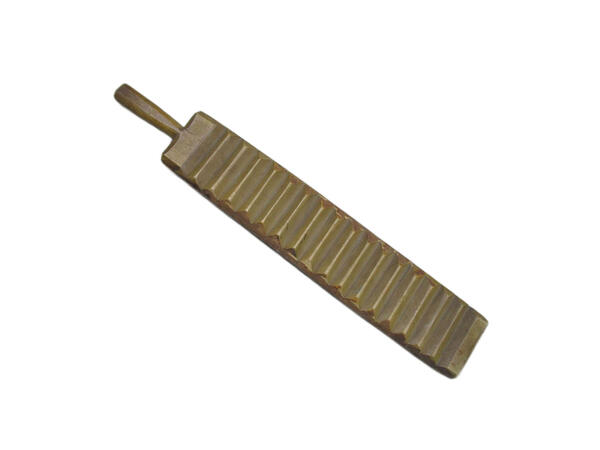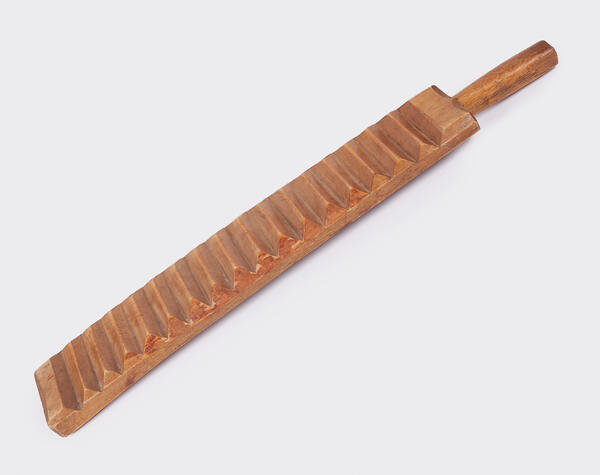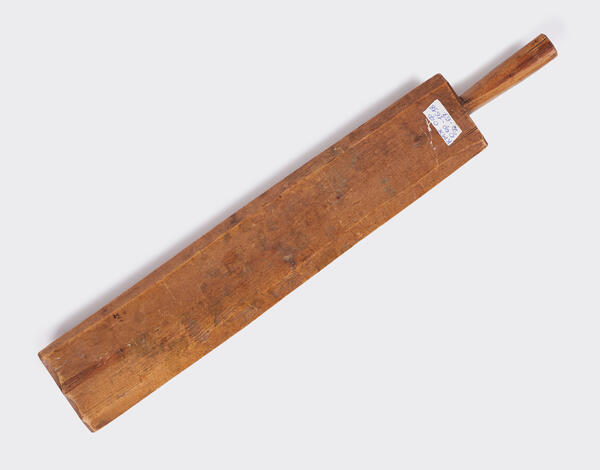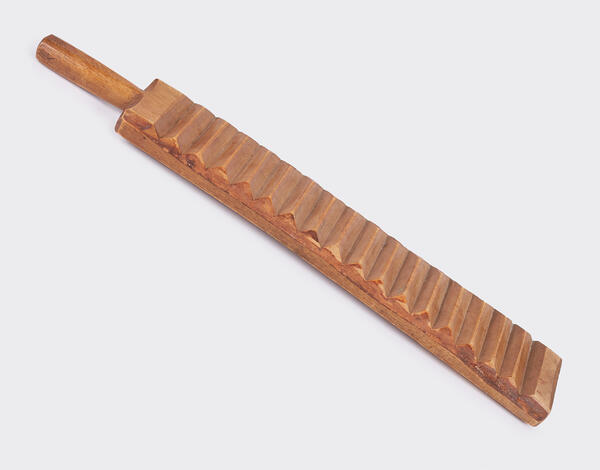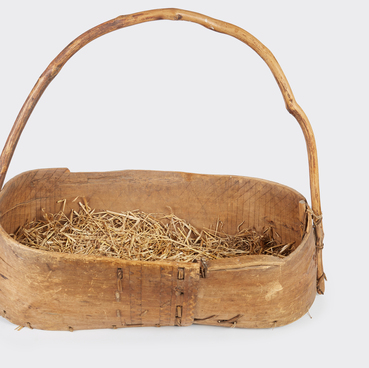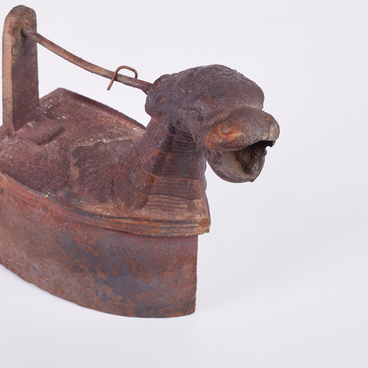The collection of the Zheleznodorozhny Local Lore Museum includes a rubel — a household item that was used for rolling (ironing) linen and leather. The rubel was a wooden plank with a handle. Transverse rounded ribs were cut on one side of the plank, the other side remained smooth, sometimes it was decorated with intricate carvings. Hardwood was used to make rubels: oak, rowan, beech, maple and birch. According to some sources, a set of a rubel and a roller existed in Rus for about 700 years.
Rubels differed in their shape and decoration throughout different regions of Russia. In the old days, washing was an incredibly painstaking process that at the very minimum required endurance from a woman. The only available detergent was lye, a caustic solution of ash that was used to soak clothes and boil them in a stove. The rubel was the next stage of washing when after boiling, the laundry was beaten out and then wrung out by winding it on a roller or rolling pin. After this, even poorly washed laundry became clean again.
Rubels were often gifted. So, an eligible bachelor could well give a rubel to a beautiful girl of marriageable age, at the same time evaluating if she was a good choice. By assessing the girl’s ability to use this object, one could tell if she would make a good housewife. If she could handle it with just one hand, then she was believed to be strong and able to become a great homemaker; however, if she used both hands, she was considered weak and thus deemed not ready yet to be married.
The rubel can also be used as a musical instrument:
the work could be turned into dancing and singing by running a stick along the
ribs. A resonator cavity was drilled into one of the sides (not through it),
which made the sound loud and echoing. In addition, the musical rubel was
shorter than the usual one, and its ribs had sharper edges. When playing the
rubel, the musician held it by the handle with one hand and moved the other
hand back and forth over its ribs with a wooden spoon or stick. The difference
between the musical and household rubel is that the former was hollow, while
the latter was solid.

